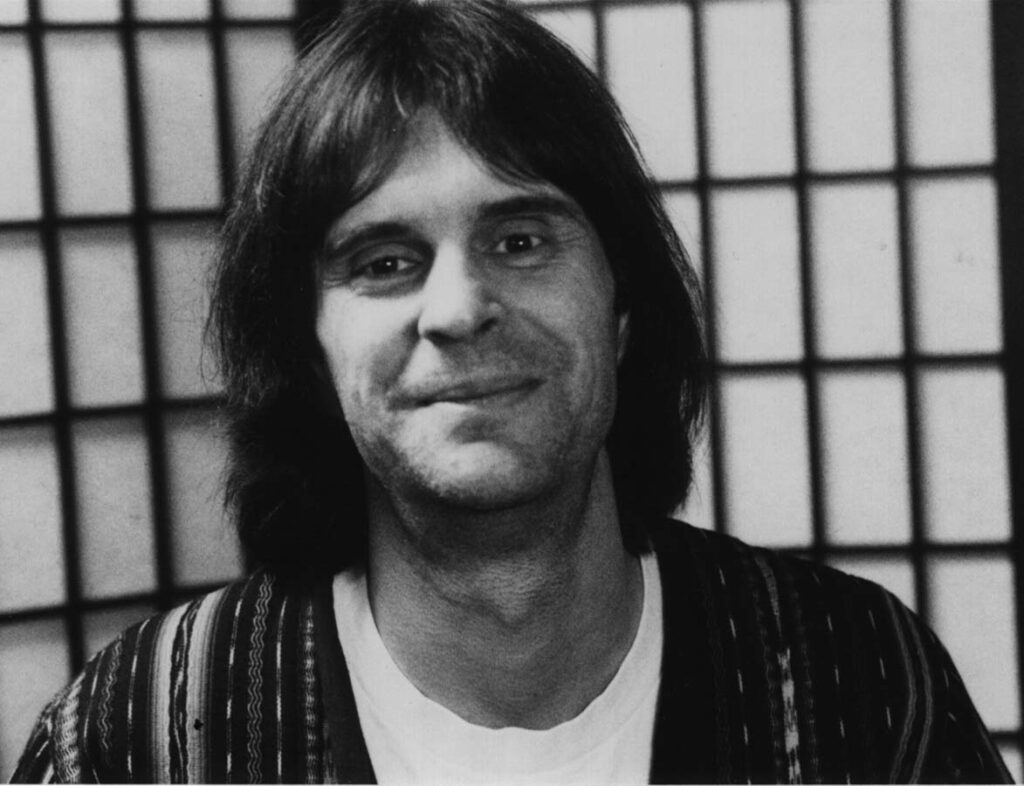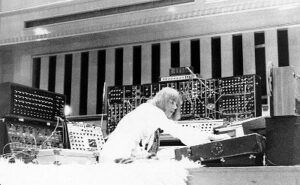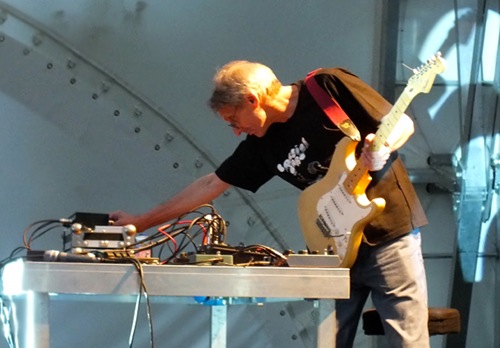The Genesis of New Age Music
Part Three - Digital Symphonies
From the online book: Music Through the Centuries by Don Robertson (2005)
Published on DoveSong.com – Revised and expanded in 2016 and 2024
Chapter Six – The 20th Century: “Dissolution”
Part One
The Dawn
The dawn of the concept of new-age music and the first major records of music for meditation and relaxation.
Part Two
Hearts of Space
A radio program in Berkeley becomes a phenomenon, bringing new music to the nation.
Part Three
Digital Symphonies
The advent of innovative, mind-expanding, meditative positive electronic music from Europe.
Part Four
California
Music artists in California form an influential and important genre of new music for healing and meditation.
Part Five
Corporate Takeover
Now called “new-age music”, the new music genre is hijacked by corporate media and the major record labels.
Archie Patterson
How did electronic music from Europe that was completely unknown in America get into the hands of Steven Hill and his Music from the Hearts of Space radio program? Let me introduce Archie Patterson.
Archie began broadcasting European electronic rock music on a two-hour radio show called Eurock on KFIG-FM in Fresno, California. Airing Wednesday nights 9:00 to 11:00 pm, he introduced in America for the first time, new music by European musicians and groups that included Klaus Schulze, Popol Vuh, Tangerine Dream, Jean-Michel Jarre and Ashra. After helping Stephen Hill launch his Music from the Hearts of Space radio program, Stephen Hill began playing the music of these European artists.

Archie began was the publisher of Eurock Magazine. He has been, and continues to be, a most significant figure because of his influence on American musicians and his distribution of European rock and electronic music recordings in America.
Digital Symphonies from Europe
For me, the most important music that I had discovered listening to Steven Hill and Anna Turner’s “Music from the Hearts of Space” radio show during 1980 was the amazing electronic music that was being created in Europe. I realized for the first time that by using synthesizers and electronic equipment, I could “orchestrate” the piano improvisations that I had been playing for six years. I had always visualized my music as orchestral from the time that I started composing music in my head as a small child.
If you ask many musicians today who the greatest pioneer of synthesizer music was, the answer might be the American Walter Carlos (known as “Wendy” after his sex change) who produced a campy synthesized Switched-On Bach in 1968 that sold a lot of records. But I submit that the real pioneer of synthesizer music was a German by the name of Klaus Schulze, of whom most people in America have never heard. It was Klaus who turned the synthesizer into an art machine extrordinaire.
Klaus Schulze (1947-2022)

Twenty-two-year-old Klaus Schulze had begun his musical life in 1969 when he became the drummer for Edgar Fröse’s band called Tangerine Dream. They released their first album Electronic Meditation in 1970. The group consisted of Edgar Fröse, Klaus Schulze and Conrad Schnitzler. In 1971, Klaus left Tangerine Dream and joined guitarist Manuel Göttsching and bassist Hartmut Enke to form Ash Ra Tempel (in 1976 renamed Ashra), with whom he recorded several albums. However, his goal was to become a solo synthesizer musician, composing and performing his own music. His first solo album appeared in 1972 and was called Irrlicht.
Klaus can create an incredible symphonic sound, and when I first heard it over the airwaves on the “Music from the Hearts of Space” radio program, it made me realize how synthesizers could be used to create orchestral music, which is what I had wanted to do. Chances of getting your music played by an orchestra were slim, and writing music that wasn’t full of ‘modern’ discords was out of the question: no conductor wanted that.
I don’t really like much of Klaus’ music because it is too discordant for me. However, some of his music I considered to be models for the new classical music that would be making its appearance during the 21st century.
Timewind was the name of Klaus’ fifth album, released in 1975. It won the Grand Prix International. That same year he also created two albums with Japanese composer Kitaro, the artist whom Ethan Edgecombe will introduce in the United States in about 1981 or 1982. “Bayreuth Return” and “Wahnfried 1883”, the two long tracks on the Timewind album, are dedicated to Richard Wagner, one of the greatest and the most misunderstood composers of all time. Wahnfried was the name of Wagner’s home in Bayreuth.
Simply called “X”, Klaus’ two-LP tenth album was a breakthrough and an artistic triumph, with cuts that employed a symphonic sound that had never been achieved by anyone using synthesizers before. The tracks were named “Friedrich Nietzsche”, “Georg Trakl”, “Frank Herbert”, “Friedemann Bach”, “Ludwig II von Bayern”, and “Heinrich von Kleist”.
Klaus created his own “Innovative Communication” record label in 1979 and released an album called Harmonic Ascendant by Robert Schröder. From the sound of the music and from insider reports, the album was largely Klaus’ creation. It’s a great album with a totally new and refreshing sound, Wolfgang Tiepold playing cello.
Ash Ra Tempel
In 1976, a very important album called New Age of Earth was released in Germany by Ashra, the group that Klaus had formerly been with, but subsequently left, and that by this time consisted of only the German guitarist Manuel Göttsching (1952-2022). I was fortunate to be able to hang out with Manuel and his wife in Berlin for several days in Berlin in 2009.
Ashra – Ocean of Tenderness

As I have stated, I first heard Klaus and Manuel’s music on Stephen Hill and Anna Turner’s Thursday late-at-night “Music from the Hearts of Space” radio program on Berkeley’s KPFA. For the months after my first discovery of this program, I was exposed to music that had been completely unknown to me. These were recordings that were practically unavailable in American record stores: music by Klaus, Manuel, as well as other European electronic music artists like Popul Vuh, Vangelis, Deuter, Ariel Kalma, Peter Michael Hammel and Jean-Michel Jarre.
New Age Electronic Music From Germany
Ireland, France, Denmark & Spain
Vangelis (1943-2022)
Videos from Various Artists
